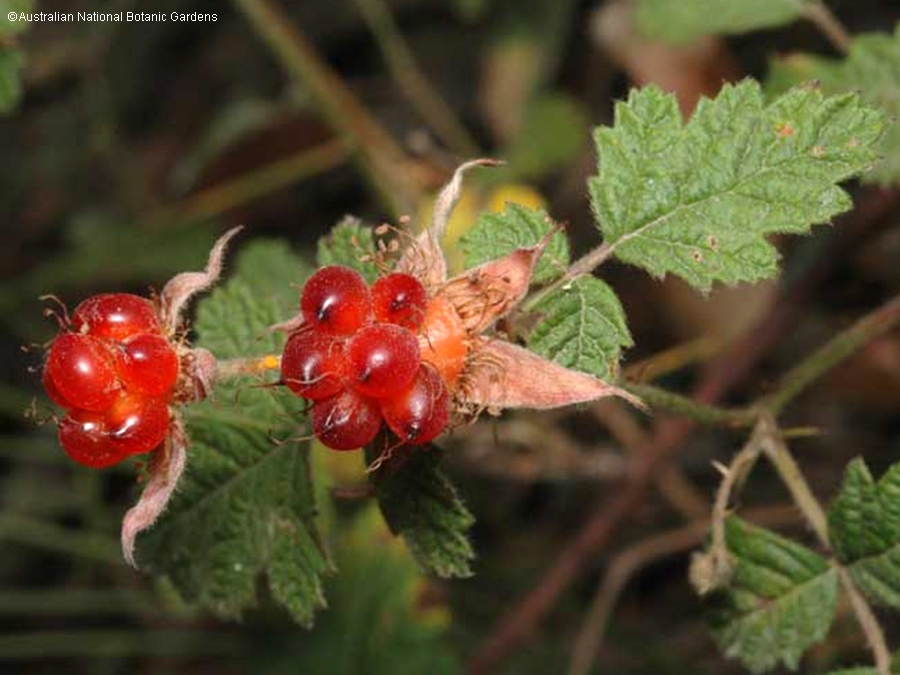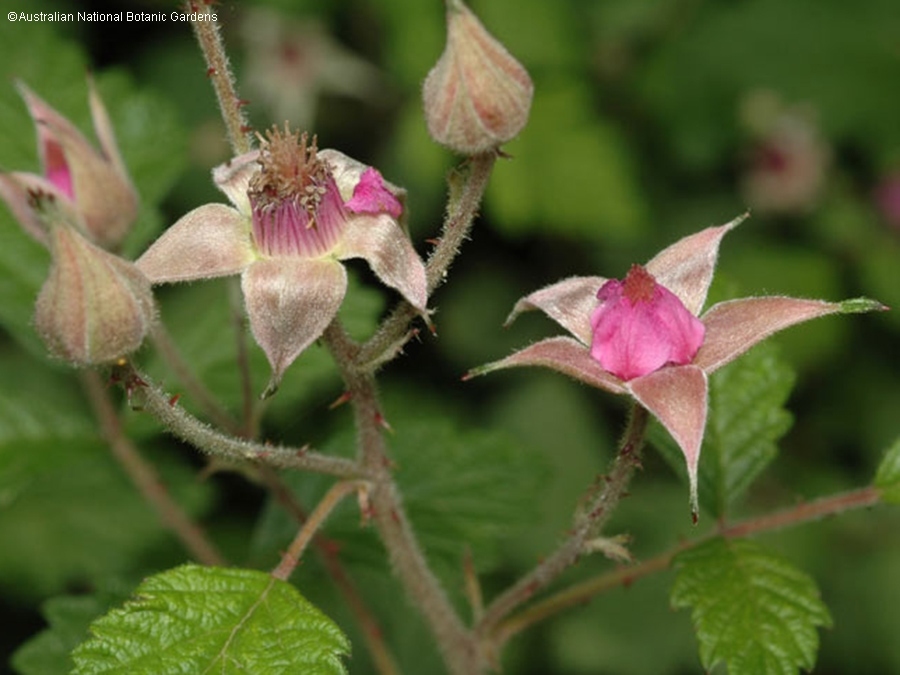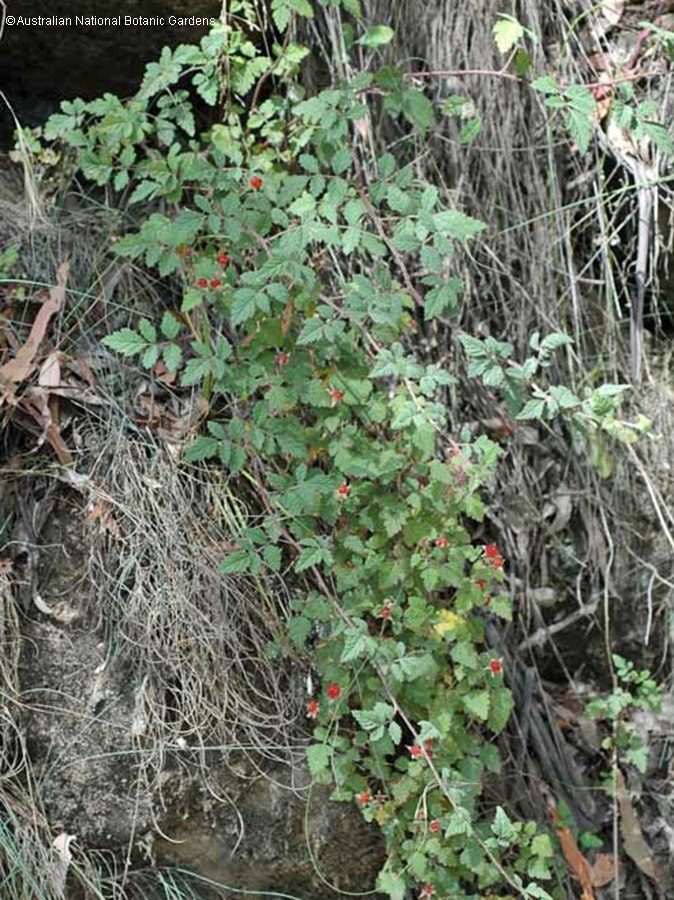Australian Tropical Rainforest Plants - Online edition
Rubus parvifolius L.




Linnaeus, C. (1753), Species Plantarum 2: 1197 Type: "Habitat in India Osbeck."
Native Raspberry, Pink-flowered Native Raspberry, Small-leaf Bramble
Leaves compound, alternate. Stipules 2, linear, 5.5-12 mm long, attached at junction of petiole to stem. Petiole 11-30 mm long, grooved on upper surface, hairy with prickles. Leaflets sometimes 1-foliolate, usually pinnately compound with 3 to 5 leaflets; lateral leaflets opposite with petiolule 0-3 mm long; terminal leaflet present, larger than laterals and with longer petiolule, 1-19 mm long. Leaflet blades ovate to rhombic, lateral leaves 1-2.6 cm long, 7-2.2 cm wide, terminal leaflet 1.9-4 cm long, 1.7-4.2 cm wide, base cuneate to obtuse, margins irregularly serrate, sometimes biserrate or lobed, apex acute with mucro or obtuse in outline. Pinnately veined with 3-6 pairs of lateral veins, deeply impressed on upper surface, sometimes basal pair of lateral veins with prominent tertiary veins giving a more or less palmate appearance. Upper surface bullate and ± hairless, dark green, lower surface whitish with a dense covering of woolly hairs, curved prickles occasionally present. Domatia absent, glands absent.
Inflorescences terminal or axillary, up to 7 flowers arranged in racemes. Flowers bisexual, actinomorphic, 5-merous. Pedicels 1-3 cm long. Sepals fused for less than half their length to form a shallow funnel-shaped hypanthium, sepals 8-14 mm long, lobes triangular, spreading to reflexed at anthesis, green, hairy, ± prickles on outer surface. Petals free, orbicular to obovate, clawed, 4-6.5, 3-5 mm wide, pink red or light purple, sparse hairs on both surfaces. Stamens numerous (60-75), shorter than styles, up to 5 mm long and attached to rim of hypanthium. Ovaries superior, 26-38 free carpels, glabrous or pubescent, attached to an elongated receptacle, one ovule per ovary. Style pink.
Features not available.
A naturally occurring hybrid between Rubus parvifolius and Rubus moluccanus var. trilobus, known as Rubus x novus, has characters intermediate between these two species; the leaves are either simple and deeply 3- or 5-lobed or irregularly 3-foliolate, 2-7.5 cm long, found north from Orbost, Vic., to Mackay, north Qld. This profile information and associated coding has been adapted from Bean (1997), Evans et al. (2007), and Harden et al. (2014).





